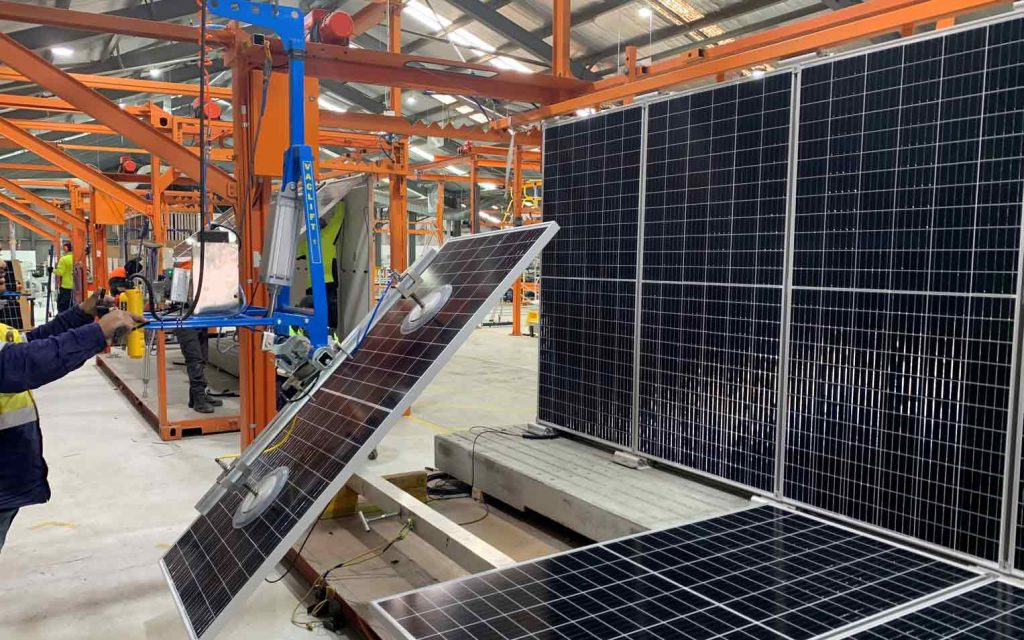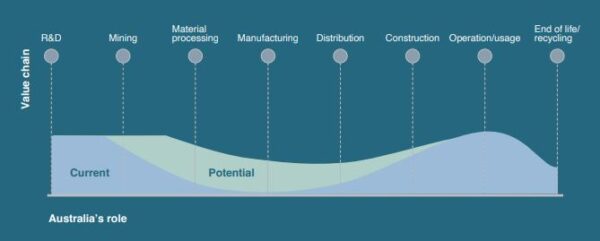New report tips 60,000 jobs from Australian PV manufacturing industry

- by Admin
- April 10, 2024

Building a domestic solar panel manufacturing industry based on Australian innovation could generate up to 60,000 jobs and help cement the nation’s future as a renewable energy superpower. However, access to capital and focused policies are essential if manufacturers are to reach scale where they can be internationally cost-competitive.
A new report, commissioned by the Australian Manufacturing Workers’ Union (AMWU) and Climate Action Network Australia, highlights the potential for Australia to play a lead role in the clean energy transition as global demand for critical minerals and renewable energy creates new opportunities to leverage its “significant” advantages in technology and resources.
The “Towards a Renewable Energy Superpower” report lays out key employment and economic opportunities associated with the global clean energy transformation, but also warns of the need for government to identify key areas for investment and to develop coherent industry policy platforms to ensure Australia stakes out its future as a renewable energy superpower.
“Right now, we are being left behind, if not going backwards, as other major economies around the world make massive investments in manufacturing renewable energy infrastructure,” the report says. “The time to change this, through focused policy action and investment by government, is now.”
Australia is already playing a role in a number of major clean energy technology sectors, including solar, wind, critical minerals, battery energy storage and electric vehicles (EVs), but that participation is often thin, with only a handful of companies involved.
AMWU National Secretary Steve Murphy said Australia’s comparative advantages in resources, solar and wind and research and development provide a significant opportunity to invest in more downstream value-adding activities, build capacity in domestic manufacturing sector and create the jobs of the future.
“Australia is a global leader in renewable energy research and development and has access to the best renewable energy sources in the world, yet our contribution to date has been bound up in our reputation as a ‘dig and ship’ economy, where minerals are sent offshore to produce energy and manufactured goods,” he said.
The new 60-page report suggests that establishing a national solar panel supply chain that includes processing, manufacturing, services and recycling could create 60,000 jobs.
The economic benefits are also considerable, including almost AUD 70 billion ($46.35 billion) in building a diversified battery supply chain and up to AUD 82 billion in wind tower production by 2050.
The report also identifies key opportunities to develop port infrastructure, high-voltage cable manufacturing, and electric heavy vehicle production while critical mineral refinement and green hydrogen are highlighted as “keystone” upstream opportunities.

To realize these opportunities, the report calls for the development of a new workforce, industry policy platforms for each target sector to provide a clear roadmap for growth, and government procurement requirements to provide market demand.
The report also suggests an Australian equivalent of the US Inflation Reduction Act level of funding is essential if Australia is to fulfil its aspirations to be a renewable energy superpower.
Report co-author Chris Briggs, research director at the University of Technology Sydney, said access to capital will be critical while government support, through mechanisms such as a production tax credit, co-investment or offtake agreements, are required to enable them to scale rapidly.
“We must establish a fund that can use targeted investment, grants and incentives to help the Australian renewable energy sector scale into internationally competitive exporters,” he said.
Briggs also urged state and territory governments to use local content laws and government procurement to support new businesses.
“We also need to prepare our state vocational education centers, universities, and businesses to train and develop the renewable energy workforce of the future,” he said.
Federal Jobs and Skills Minister Brendan O’Connor, who launched the report, said the economic and employment benefits of building Australia’s clean energy manufacturing capacity are considerable.
“Harnessing the opportunities of the renewable energy transformation provides a very real opportunity to ensure our economic prosperity,” he said.
This content is protected by copyright and may not be reused. If you want to cooperate with us and would like to reuse some of our content, please contact: editors@pv-magazine.com.
The Latest News
-
December 22, 2024Tiger Woods’ son Charlie makes a hole-in-one in the final round of the PNC Championship – Australian Golf Digest
-
December 22, 2024Tennis’ love match: Meet ‘Aussie’ Matteo Arnaldi and his Melburnian girlfriend
-
December 22, 2024GEORGIE PARKER: McSweeney was McStiff to get axed
-
December 22, 2024Time for the Swedish chef: Ikea’s furniture profits are down in Australia, but food sales are booming
-
December 22, 2024Carlos Alcaraz and Matteo Berrettini exchange messages after practising together ahead of the Australian Open





